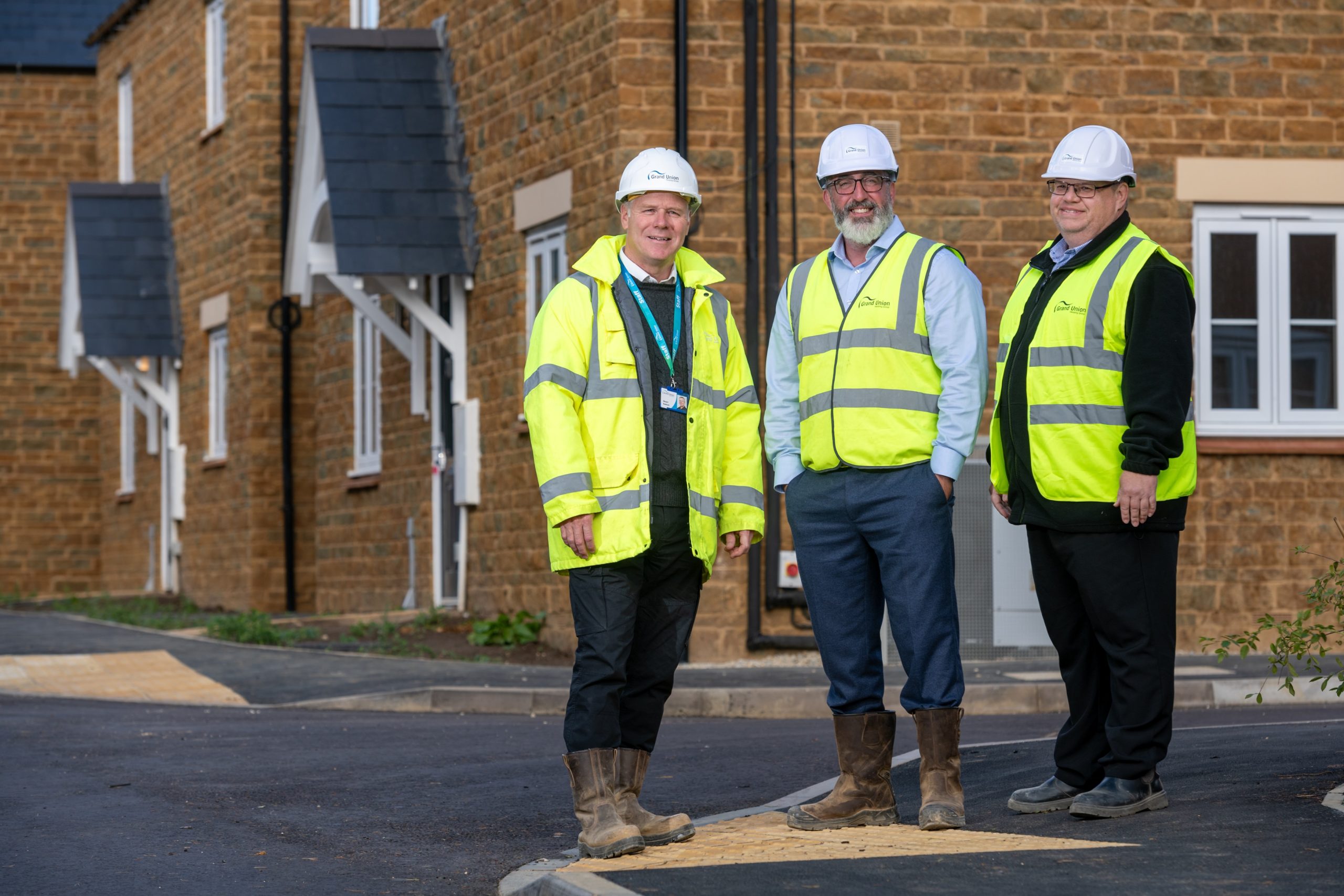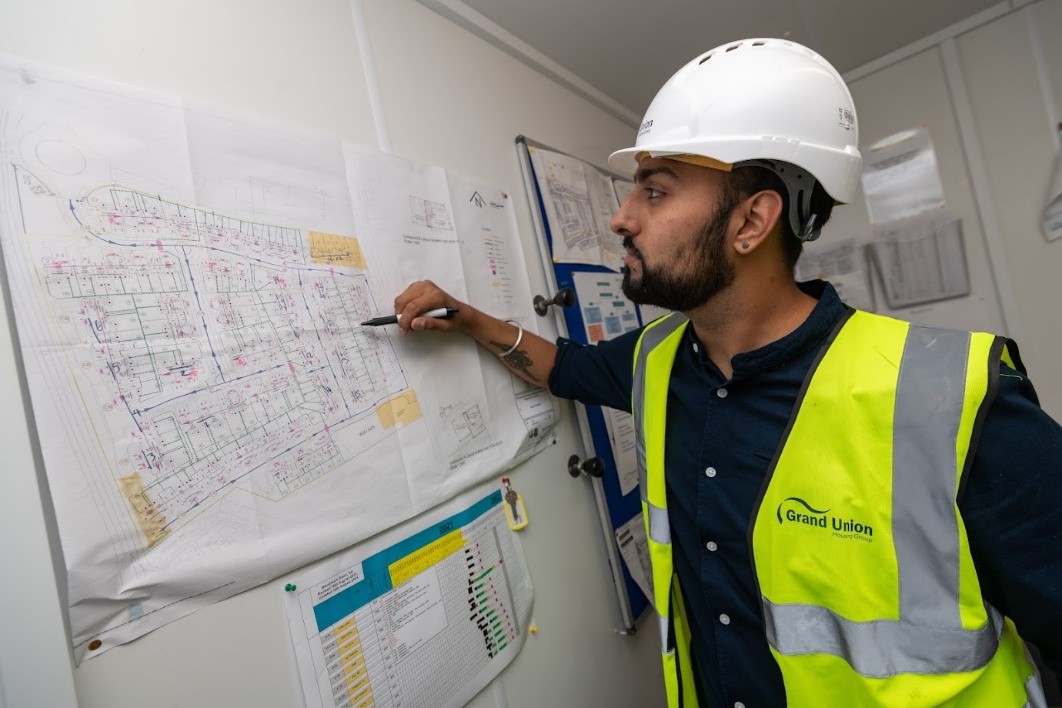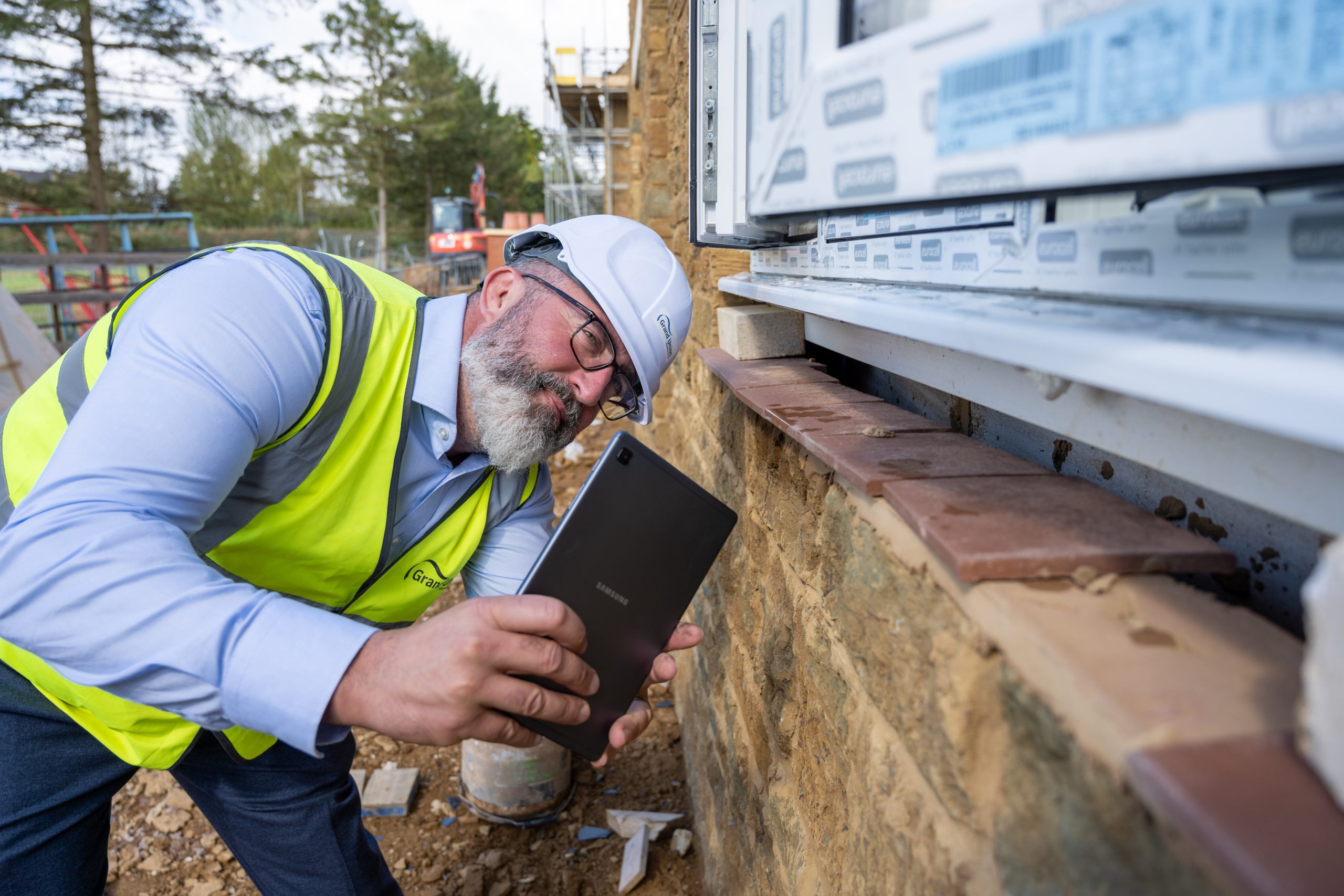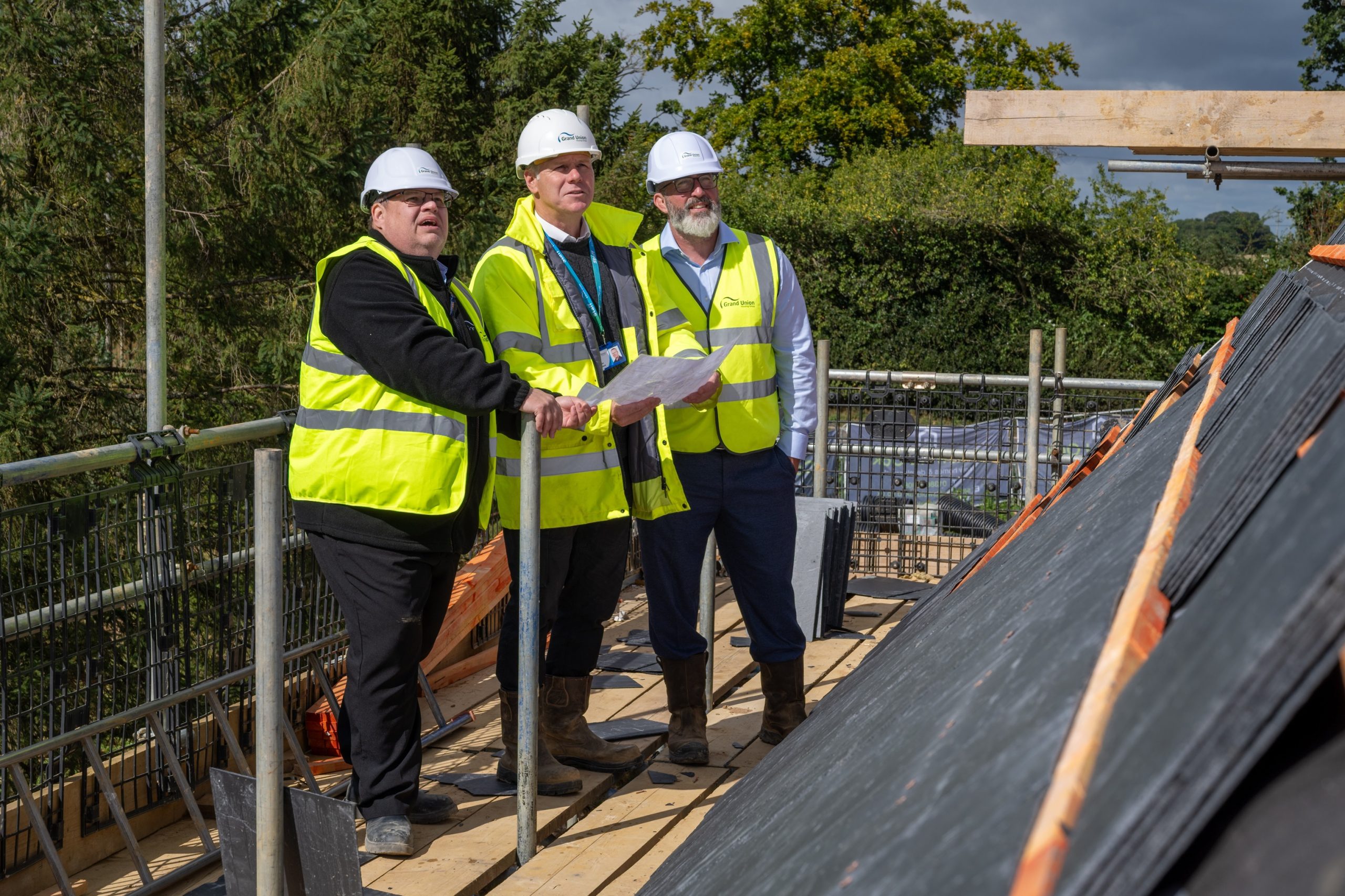
by Stuart Retford, Build & Quality Manager
I joined Grand Union in September 2014, when the organisation decided to bring the clerk of works role in-house, instead of using an independent consultant or an employer’s agent to cover inspection and snagging duties. From being the sole Clerk of Works back then, moving to Senior Clerk of Works when a second joined the team, and then to Build & Quality Manager, I now head up a team of six. More about them later!
To explain the clerk of works role, typically we join a project team before construction starts. We can liaise with architects, employer’s agents (an independent consultant building surveyor for Grand Union), quantity surveyors and build managers at the design stage. We also work very closely with our development project manager colleagues, the site managers and their teams during the construction phase, as well as trying to build a rapport with site trades where possible.
Bringing the role in-house at Grand Union has provided a number of benefits:
- We’re able to focus on information and details that the business needs, that are specific to each project.
- Knowledge from each project stays with the team and business, rather than leave with a consultant.
- Our sole focus is to seek the best outcomes for the business, rather than trying to please others.
- Standardised and bespoke reports are routinely produced, that the team are more familiar with.
- We have in-house technical support and specification/drawing reviews that can be fed back directly to team members.
- There will be lessons learned from each project, which can be taken forward to other projects, avoiding repetitive issues.
But I didn’t start my career as a Clerk of Works – my original trade background is a gas engineer (and I still hold up-to-date gas qualifications). I went on to supervisory and contracts manager roles within mechanical services companies, which carried out gas, heating, plumbing, electrical and HVAC works. A lot of the time this was for social housing contracts and included retrofit installation works, new build and repairs and maintenance too.
I went on to study part-time for an honours degree in construction management, while carrying out a surveying role in my day job. This sparked off a real interest in all aspects of construction, from design, management, cost/quality controls and maintaining the property after handover. Becoming a Clerk of Works brought all my previous specialist knowledge together with my growing new-build knowledge.

Since I joined Grand Union, my role has certainly grown and brought me additional responsibilities. I am increasingly involved in the early design stage of our projects, to make sure that specifications are correct and technical queries are answered before construction begins. And our own new-build design specification has required significant development over the years, which I monitor and update as our business needs or legislation changes.
I also provide my team with the foundations (excuse the pun!), motivation and support they need to perform their roles to their absolute best. I divide my time between planning and managing their responsibilities, keeping track of new sites so work can be distributed evenly, picking up on issues or queries at past sites, keeping our new build base specification up-to-date and performing a Clerk of Works role on my own sites.
I’m fortunate to have a great team around me that I can rely on.
We have Richard and AJ, who carry out the main bulk of the Clerk of Works duties. This includes routine site inspections, specification and compliance checks, compiling snagging and handover lists as well as providing vital technical support to the team and our customers.

There’s also Natalie, who manages the defects that come in during the builder’s 12 month liability period, and Ade, who supports the administration of the defects process. When a defect is reported by a customer in their new home, Natalie and Ade will make sure that it’s delivered to the right contractor, and completed satisfactorily and within timescales. They’ll also attend the final check at the end of the 12 month liability period, where they compile a final list of any outstanding work.
The newest member of the team is Chris, who’s our Assistant Clerk of Works. Chris will help the whole team during busy periods and take on small/simple schemes of their own whilst developing their construction knowledge.

Whilst construction itself hasn’t changed dramatically over the last 10 years, the clerk of works role within our development team has evolved, to some extent. From an original focus on inspections and snagging, the role is now more involved in the design and specification decisions within the project team. Since the tragedy at Grenfell in 2017, we’ve taken an active role in fire-related inspections, to close out any gaps where works are not inspected by building control. Our software for reporting site based routine inspections and snagging has become digitised. We now capture a vast amount of information, data and photos via our phones for a web portal, so we can download this information for our records when creating our reports. The capture of more information hasn’t meant more time on site, but has benefited the business, as we can refer back to this data at any time in the future.
The role is not without its challenges, however. Whilst building homes is still very much a hand-built process, it relies heavily on a great number of individuals’ skills and specialist capabilities to create a finely built final product. With a decreasing skills shortage in the industry, we may have some difficult conversations when calling out what we believe is substandard workmanship. We tactfully confront these situations and push hard to drive up standards with a view to getting the best possible outcome for our customers.

Construction can also be plagued by unforeseen troubles, mostly from adverse weather, which can cause damage if work is left unchecked. It can even trigger severe delays, which can create a pressured situation to complete work in a shortened timeframe before handover, whilst still maintaining the agreed quality standard.
Changes are also our enemy; whether that’s design, production programming or sequencing, labour sources, materials or components. These deviations to previously agreed planning create a “cause and effect” situation that needs some reactive decisions which can continue throughout the build. These challenges keep us constantly on our toes but make every project very unique and interesting.
Despite an ambitious build programme, our team will always look to meet new challenges and fulfil all our commitments to the business. Personally, I’d like to see our performance grow through the career development of team members and increasing the use of innovative working or software that becomes available. We’ve also got some significant changes to the building regulations coming in the very near future, so I need a fully skilled team ready to deliver sustainable and energy efficient homes at the earliest opportunity.

![[LGGRA-3182] Icons_Wrench](https://www.guhg.co.uk/wp-content/uploads/2024/12/lggra-3182-icons-wrench.png)
![[LGGRA-3182] Icons_support](https://www.guhg.co.uk/wp-content/uploads/2024/12/lggra-3182-icons-support.png)
